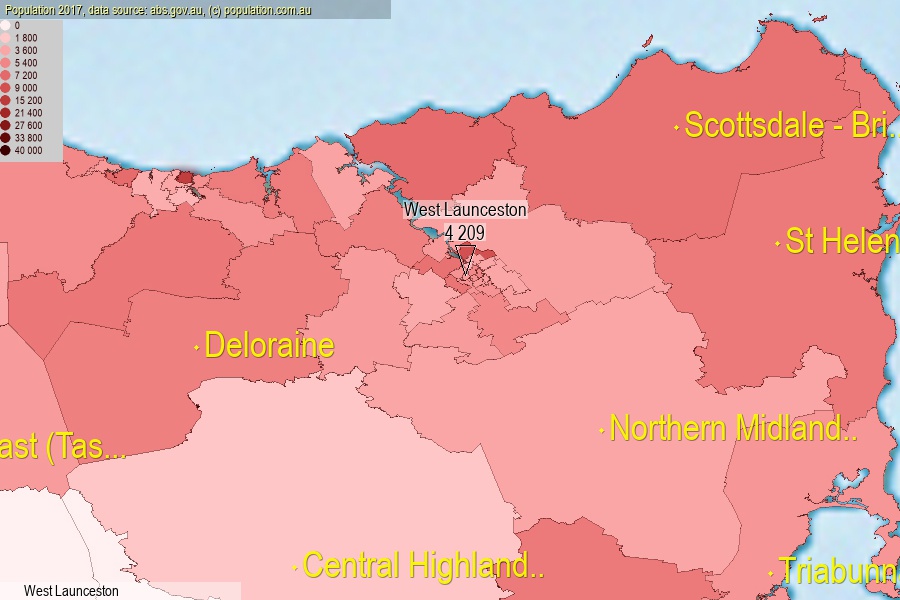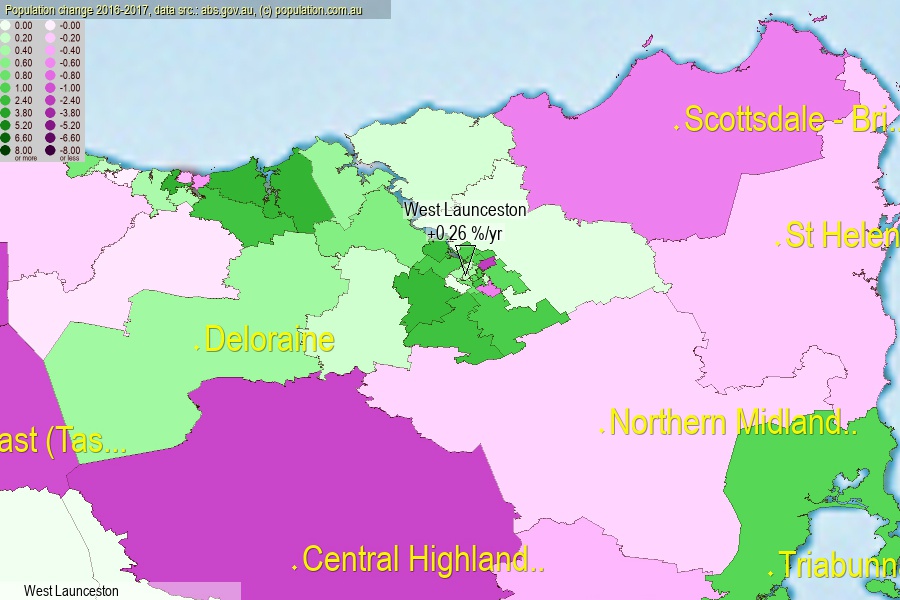 population.com.au
population.com.auLast official estimated population of West Launceston (as Statistical Area Level 2) was 4 209 people (on 2017-06-30)[2]. This was 0.02% of total Australian population and 0.799% of TAS population. Area of West Launceston is 4.00 km², in this year population density was 1 052.25 p/km² . If population growth rate would be same as in period 2016-2017 (+0.26%/yr), West Launceston population in 2025 would be 4 298. [0]



Click to enlarge. West Launceston is located in the center of the images.
Population [people], population density [p./km²] and population change [%/year] [2]
View borders » (new window) [4]
[1991-1992] +0.02 %/Yr.
[1992-1993] -0.58 %/Yr.
[1993-1994] -0.32 %/Yr.
[1994-1995] -0.27 %/Yr.
[1995-1996] +0.07 %/Yr.
[1996-1997] +0.73 %/Yr.
[1997-1998] +0.65 %/Yr.
[1998-1999] +0.39 %/Yr.
[1999-2000] +0.65 %/Yr.
[2000-2001] +0.86 %/Yr.
[2001-2002] -0.40 %/Yr.
[2002-2003] +0.64 %/Yr.
[2003-2004] +0.68 %/Yr.
[2004-2005] +0.73 %/Yr.
[2005-2006] -0.07 %/Yr.
[2006-2007] -0.33 %/Yr.
[2007-2008] +0.07 %/Yr.
[2008-2009] -0.44 %/Yr.
[2009-2010] -0.56 %/Yr.
[2010-2011] -0.42 %/Yr.
[2011-2012] -0.21 %/Yr.
[2012-2013] -0.28 %/Yr.
[2013-2014] -0.07 %/Yr.
[2014-2015] -0.17 %/Yr.
[2015-2016] 0.00 %/Yr.
[2016-2017] +0.26 %/Yr.
[0] Calculated with linear interpolation from officially estimated population
[1] Read more about SA2 and Australian Statistical Geography Standard (ASGS) on abs.gov.au
[2] Population data from Australian Bureau of Statistics (Population and density: 2017; change: 2016-2017)
[3] Digital Boundaries: Australian Statistical Geography Standard (ASGS) 2016.
[4] Border coordinates are simplifyed using Ramer-Douglas-Peucker algorithm.